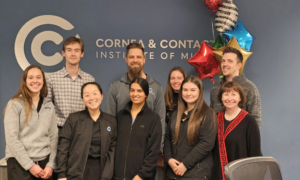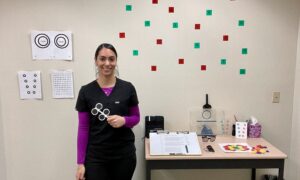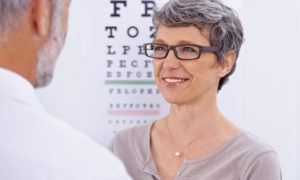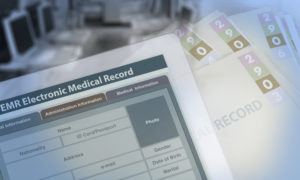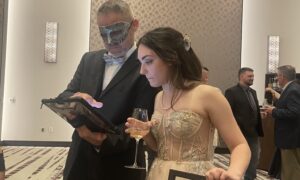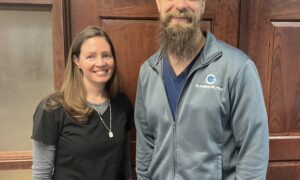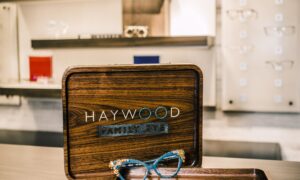By Ken Krivacic, OD, MBA

July 29, 2020
The challenges of reopening in the midst of a pandemic require us to be at the top of our game in understanding our patients’ needs and thought processes. Here is how my practice uses the problem-solving model, heuristics, to take actions that make it more likely patients will respond in the way we hope.
A heuristic technique, or a heuristic for short, is any approach to problem solving or self-discovery that employs a practical method that is not guaranteed to be optimal, perfect or rational, but which is nevertheless sufficient for reaching an immediate, short-term goal. Examples that employ heuristics include using trial and error, a rule of thumb, an educated guess, an intuitive judgment, a guesstimate, profiling and common sense. Heuristics are important because studies have shown that we humans make 95 percent of our decisions using mental shortcuts or rules of thumb.
So, how can we use an understanding of heuristics to improve our optometry practices? Here are examples of how I have used three heuristics, and the benefits that resulted for our patients and practice.
The Affect Heuristic
The affect heuristic relates to how we feel and subsequently think. The affect heuristic, for example, means if you like the doctor who is treating you, you’ll be more likely to follow their suggestions, putting less weight on the evidence of what consequences (positive and negative) this will have.
Other Pieces to Explore
Since the affect heuristic involves how people feel, you as a manager of your practice, have several areas to impart that positive feeling on people. These include:
• A well-lit and well-designed décor
• Pleasant staff
• Smiles
• Thank-yous
• Using the patient’s name
• Make them like you – personal stories
The last suggestion has made a tremendous difference in how I practice and the results. Years ago, starting in practice, I believed patients just wanted an eye exam and a professional doctor. Over the years I noticed that if I opened up more, there seemed to be more of a connection to that patient, and in turn, they were more likely to purchase from our practice rather than go elsewhere. People generally want to do business with people they like.
The Anchor & Adjustment Heuristic
The anchoring and adjustment heuristic describes the common human tendency to rely more heavily on the first piece of information offered (the “anchor”) when making decisions. People’s valuation of goods, and the quantities they buy, respond to anchoring effects. For example, when a stack of soup cans in a supermarket is labeled, “Limit 12 per customer,” customers tend to buy more cans because they perceive the cans to be in great demand.
Since the anchoring and adjustment heuristic influences people’s perception of price or cost, you can use this in a variety of places in your office:
• Pricing on frames and lenses
• Presentation of products
• Start with a high anchor
• Presentation of services
• Exams
• Contact-lens evaluations
• Surgeries
In our practice, we have used anchoring in how we present our products and services. I want the patient to have the best possible option (i.e. best contact lens or best progressive lens), and those best options, in most cases, are more expensive. Ultimately it is the patient’s decision on what they can afford, but if you start your anchor at the high end rather than the low end, you should see an increase in revenues.
The Familiarity Heuristic
The familiarity heuristic is based on using past actions as a benchmark for behavior in a new (yet familiar) situation. The familiarity heuristic increases the likelihood that customers will repeatedly buy products of the same brand. This concept is known as brand familiarity in consumer behavior. Due to the familiarity heuristic, customers have the rule of thumb that their past behavior of buying a specific brand’s product was most likely correct and should be repeated.
How can we use the affect heuristic in our offices?
Since the familiarity heuristic makes it easier for patients to make choices in your office, below are the areas it can be beneficial for your practice:
• Brand name frames vs. generic
• Brand name contact lenses vs. generic
• The advantage of former patients vs. new patients
• Less time spent
• Don’t have to “sell”
• Less costly to get into office
• The advantage of retaining staff
In my practice, we tend to use and promote brand names for exactly what the familiarity heuristic implies–people are more likely to purchase a product that they have heard of before. An example of this is contact lenses. I get asked everyday, “What brand of contact lens are you fitting me in?” I could, for example, say “Acuvue,” but instead I say “Johnson & Johnson” because patients know that name and consider it a trusted name in healthcare.
Do heuristics mean that every patient is going to buy a brand name, or want to hear about your son’s graduation, or buy your best products? No. Yet research from behavioral economists have shown that more often than not people revert to heuristics when they make a purchasing decision. Use those tendencies to benefit your practice, not only financially, but in how you practice and serve patients. You will find your work life easier and more impactful.
 Ken Krivacic, OD, MBA, owns Las Colinas Vision Center in Irving, Texas. To contact him: kkrivacic@aol.com.
Ken Krivacic, OD, MBA, owns Las Colinas Vision Center in Irving, Texas. To contact him: kkrivacic@aol.com.

